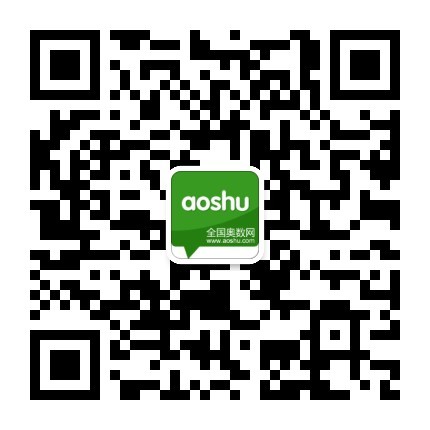来源:大医小护 作者:Daily Health杂志 2018-05-11 16:19:59
Is the cough an isolated symptom; if not, what other symptoms exist?
Is there any runny nose; if any, what is the colour?
Does he snore at night?
Is the cough related to position or meals?
Is there a previous history of upper respiratory tract infections or allergic disease?
Is there a family history of respiratory, allergic, or infectious disease?
Is there evidence of environmental triggers?
Have any laboratory tests or examinations been done?
What treatments have been tried, and what were their effects?
What medications, if any, does the child take?
3.Avoid unnecessary antibiotics and cough suppressants. Take the medication as prescribed.
说了这么多慢性咳嗽的病因治疗,那么我们在家怎么护理慢性咳嗽的宝贝呢?
咳嗽是一种症状,是机体重要的自我清洁和保护机制,有利于清除呼吸道的分泌物、过敏原和异物,并且具有清除呼吸道刺激因子、抵御感染的作用。总的原则是如果宝宝的咳嗽不影响饮食、睡眠,以及其他日常活动,就不需要给他吃止咳药。但如果咳嗽较多,影响孩子的学习,进食,运动,和睡眠,这时候就要考虑在医生的指导下适当选用止咳药物和家庭疗法。
★ 有痰的湿咳
咳嗽可以帮助痰液排出并防止痰液滞留呼吸道所引起的继发感染,所以有痰的咳嗽应该以祛痰为主而不是单纯止咳,可以选用能让痰液稀释从而容易排出的药物并且多喝水。过多的咳嗽也会影响睡眠并刺激呼吸道粘膜使痰液增多,在这种情况下可以酌情谨慎地使用止咳药。
★ 无痰的干咳
多喝水,保持气道湿润。如果有剧烈、阵发性的干咳,并影响孩子睡眠进食和学习的,建议在医生的指导下选用止咳糖浆。一般来说,6岁以下的孩子要慎用复方的感冒咳嗽糖浆,因为如果有其他药物同时服用的话,会增加重复服用相同药物成分和过量服药的风险;再者中枢镇咳药物的成分会抑制孩子的咳嗽反射,一旦有痰液就会积聚粘滞在咽部或气管引起症状加重或继发感染。另外,国家食品药品监督管理局也明确规定在12岁以下的儿童中禁用含有可待因等易引起成瘾性的止咳药水。
★多饮水
小口多饮水,对干咳和湿咳都有帮助,稀释咽喉部的痰液,使之易于排出。
3个月~1岁:咳嗽时给予温的液体口服 (比如温白开水,温苹果汁),一天4次,每次5~15毫升。注意不要用蜂蜜水以防肉毒杆菌中毒的风险。
1岁以上的儿童:需要时可以口服2~5毫升的蜂蜜水,可以帮助稀释痰液减轻咳嗽。有研究发现蜂蜜水可以帮助减少晚间咳嗽的频率和严重度。
★ 湿化空气
打开浴室的淋浴龙头,帮助宝宝吸入温暖的水蒸气,或者生理盐水雾化吸入对减轻阵发性干咳和稀释痰液有帮助。
★ 饮食
建议清淡饮食,规避油炸,甜腻,辛辣的食物。多吃蔬菜水果,特别是对润肺止咳和理气化痰有帮助的,比如梨,银耳,百合, 莲子,杏仁,薏苡仁,莲藕, 萝卜,山药,冬瓜,丝瓜,桔子, 枇杷等等。
★ 规避过敏原
如果是过敏性疾病引起的咳嗽,则要先明确过敏原,然后日常生活中避免接触这些致敏物质,比如前文提到的雾霾,粉尘,尘螨,霉菌,花粉,烟雾,油烟,猫,狗,油漆味,海鲜等等。
It's important to know that a cough is a symptom, not a disease. A cough protects child's body by removing mucus, irritating substances and infections from the respiratory tract. It helps prevent bacterial infections. Generally, cough suppressants is not needed unless it disturbs child's sleep, interrupt meals, or affects school.
★ Wet cough: Coughing is useful because it brings up mucus from the lungs and helps prevent bacterial infections. Expectorants are used for a productive cough rather than cough suppressants. An expectorant helps thin the mucus and make it easier to cough mucus up. Drink plenty of water also helps. Use cough suppressants wisely when the cough keeps the child from getting enough rest and increased mucus production and secretion.
★ Dry cough: Drink plenty of fluid to keep airway clean and moist. If there is dry, hacking cough that disturbing the child's sleep and meals, choose cough syrup according to doctor's advice. Avoid multi-symptom cold and cough preparations; if you combine them with other medicines, it may increase the risk of overdose from overlapping ingredients. The American Academy of Pediatrics does not recommend cough and cold medications for kids under 6. Cough suppressants act on the center in the brain that controls the cough reflex. Suppressing the urge to cough can create an excess amount of infected phlegm in the airways, which in turn will cause the symptoms to last longer or secondary infections. In addition, China Food and Drug Administration ban cough syrup with codeine in children under the age of 12.
★ Drink plenty of fluid: It helps both dry and wet cough. Fluids keep the secretions thin and soothe an irritated throat.
For children 3 Months to 1 year of age: Give warm, clear fluids (eg, warm water, apple juice). Dosage is 5 to 15 mL 4 times per day when coughing. Avoid honey because it can cause infantile botulism.
For Children 1 Year and Older: Use honey, 2 to 5 mL, as needed. It thins secretions and loosens the cough. Recent research has shown that honey is better than drugstore cough syrups at reducing the frequency and severity of nighttime coughing.
★ Humidify the air: Expose the child to warm mist from a shower or try a normal saline nebulisation can help with coughing spasms and loosen the phlegm.
★ Diet: Eat lightly and avoid fried, fatty or spicy food. Plenty of vegetables and fruits, including pears, white jelly mushroom, lotus seed, almond, coix seed, lotus root, mooli, yam, white gourd, towel gourd, mandarin, loquat etc.
★ Avoid exposure to allergens: If the etiology of cough is allergic disease, then identify the allergens first and avoid exposure to allergens, such as haze, dust, dust mite, mold, pollen, smoke, fume, pets, dust mites, paint taste, and seafood etc.
相关推荐:
小升初试题、期中期末题、小学奥数题
尽在奥数网公众号

欢迎使用手机、平板等移动设备访问幼教网,幼儿教育我们一路陪伴同行!>>点击查看